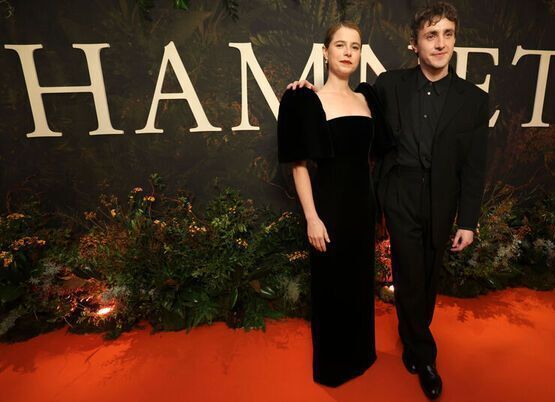County Wexford-born artist Helen O’Leary will give a talk entitled “COST,” on next Tuesday, Nov. 8 at 6:30 p.m. ET as part of New York Studio School's Evening Lecture Series fall program. The event will be held in a hybrid format at 8 West 8th Street, New York. To register to attend the event virtually or in person, please click here. It is free and open to the public. The talk will also be livestreamed on the school's Youtube page.
O'Leary has received the American Academy Rome Prize (which had the artist living in the Italian capital for a 12 months in 2018 and 2019; Hennessy Purchase Award, IMMA, Dublin; John Simon Guggenheim Fellowship; two Pollock-Krasner awards; and the Joan Mitchell Award for painting and sculpture, among others.
The title is reference to her work, which is very much about cost—"emotional, economic, and environmental."
The artist said, "Throughout my career, I have been constructing a very personal and idiomatic formal language based in simple materials and unglamorous gestures. My artistic practice emerges from constant reassignment, dismantlement, and frugal readjustment. Rooted in the outward simplicity and inner grenade of memory, my work reckons with damage and multigenerational loss, through nurturing, caring, and—ultimately—healing."
O'Leary, who grew up the the youngest of four daughters, said, "I spent the last two years of lockdown in Pennsylvania, unable to return to my family/home in Ireland, amplifying my need to unpick and reexamine the cost of choices I make—of where and how I live—adding cradles/cartons/boxes, rough eccentric vessels to hold and shelter."
Her artist's statement says, "I grew up in Ireland in the 1960s. The country at that time was deeply Catholic, isolated from the modern world by poverty and religious conservatism. My father’s early death, a tornado and then a lightning strike and subsequent bankruptcy left my young, female family/ farm vulnerable to the marauding patriarchal perversions of our village. This history haunts my art practice.
"I draw on the musical tradition of Sean-Nós, a form of cultural and personal lament sung by a singular, aging female voice.
"Its form is divided into three equal parts: head, heart, story which is the roadmap of my work. This ancient singing has persisted for centuries, which is still, even today, constantly renovated. With the beauty of a ruined voice, the singer acknowledges a fragmented history, love, sadness of daily existence, a history held between the silences, cracks and notes of definition, providing a space where trauma can be demolished, processed and survived. It is ornamental, yet unadorned, without accompaniment, stripped down and raw. As a form it is divided into three parts, head, heart, story and all three parts must have equal weight. It defies a complete definition, storing grief in the spaces between cracked, marginal notes.
"Sean Nós Singers believe that there is a shape to the sound that a given place make.
"My work is rooted in the outward simplicity and inner grenade of memoir, in the absurdities of assigned hierarchies and certainties within language, class and society. In reckoning of damage and multigenerational loss, through nurturing, caring and—ultimately— healing. I unpin and re-make, from the minutiae of gathering plants and earths from sites of trauma, to pigment, re- assignment and to re-imaging every aspect of functionality and support, from multifunctional plinths, tools, and to the structure of the museum.
"I want a painting that can fill its own needs, be to be its own structure, transparent, self-reliant, pragmatic, to be protector, shunt, shelf, room, archive, and to be a skeleton that holds the accumulation of its own bits within its frame.
"I knit with wood, bending the painting out of the ruin of its own making. Each piece is cobbled together from the detritus of earlier attempts. I build ‘history paintings’ that are created in the process of dismantling and redress. The back reveals, the fronts are cushioned with layers of linen, chalk, and layers of egg-tempera made from sourced pigment. I think of these forms as the upholstery and bulge of middle age, blank places for new memory. Failure, paralysis, grief and ultimately self-determination have long been cyclical points on the wheel of my work.Unraveling, followed by reconstruction, is the course I navigate."








